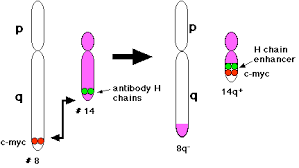Treatment and Prognosis of Cancer
Cancer is clinically classified based on its histological appearance, tumor size, and metastasis.
Grading: a histologic evaluation based on the degree of cellular differentiation
Staging: is based on the size of cancer, if it invades other tissues, and metastasis
Grading of Malignant Tumors
The different grades have a huge difference in prognosis. The process is pretty generic.
| Grade | Characteristics |
|---|---|
| Grade I | Well-differentiated, the cells look normal, good prognosis |
| Grade II | Moderately differentiated, the cells start to look atypical |
| Grade III | Poorly differentiated, cell type is hard to recognize |
| Grade IV | Nearly Aplastic, the cells look completely different |
Some cancers have specific grading techniques such as prostrate cancer which uses the Gleason system. The Gleason system uses a 1-5 and is summation based on the top 2 predominant patterns.
Staging of Malignant Neoplasms
The stage of cancer helps doctors determine the plan of action.
TNM System (most common)
T is for Tumor
| T stage | Characteristic |
|---|---|
| Tis | in situ, the tumor is noninvasive and confined to the epithelium. It is superficial and is above the basement membrane. |
| T1 | the tumor is small, and minimally invasive within the primary organ site |
| T2 | the tumor is larger or more invasive but still within the primary organ site |
| T3 | the tumor is larger and/or more invasive but the border is beyond the margins of the primary organ site |
| T4 | Very large and/or very invasive and has spread to adjacent organs |
Annual Pap Smears are used to diagnose cervical cancer in the Tis stage which has an amazing prognosis and an easy treatment (freeze the cells).
N is for lymph Node involvement
| N Stage | Characteristic |
|---|---|
| N0 | There is no lymph node involvement |
| N1 | There is regional lymph node involvement (common in breast cancer) |
| N2 | There is extensive lymph node involvement |
| N3 | Distant lymph node involvement |
M is for Metastasis
| M Stage | Characteristic |
|---|---|
| M0 | No distant metastasis |
| M1 | Distant metastasis present |
Specialty Staging and Grading
Specialty staging and grading systems are used for specific cancer types.
Duke’s classification: replaced by TMN and used for colon cancer
Ann Arbor System: used to stage/grade Hodkin’s disease and non-Hodkin lymphomas based on behavior
*NOT applicable to leukemias and tumors of the Central Nervous System (CNS)
Carcinogenesis
Carcinogenesis: the initiation of cancer formation
Carcinogenesis is usually caused by changes to the genome of a cell (how they form). This could be due to new genes being introduced by viral oncogenes (infection (EBV)) that promote cancer. Genes are damaged or mutated so that they cause cancer. Chromosomal translocations bring genes together that causes uncontrolled growth. For example in Burkitt’s lymphomas chromosomes 8 and 14, where the proto-oncogene c-myc on 8 is translocated to the Immunoglobulin heavy chain locus on chromosome 14 and it becomes overactive. In the Philadelphia Chromosome, there is a translocation of chromosomes 9 to 22 where the ABL genes are moved next to the BCR genes, this creates a tyrosine kinase.

Another way cancers are created is that repair mechanisms are defective so that “damaged” genes that could cause cancer aren’t repaired. “Tumor Suppressor” genes are damaged (inactivated). Typically a “series of unfortunate events” (several genetic changes) needs to take place before cancer develops (like in colon cancer). Environmental factors (chemical carcinogenesis) need an initiation factor and a promotion event. The initiation factor primes for cancer. The promotion event stimulates proliferation and promotes cancer. Malignant tumors tend to have more mutations.
Chemical Carcinogenesis
Asbestos - cancer of the lung and mesothelioma
Arsenic - skin, hemangiosarcomas
Benzene - leukemia
Vinyl Chloride - angiosarcoma, liver
Benzopyrene - scrotal (Pott’s cancer), bladder, lung cancer (smoking)
Connecting Chemical and Cancer (1775)
Percival Pott wrote “The Chirugical Works” on the chimney sweeper’s cancer. This was common in the “climbing boys” who were continually exposed to benzopyrene when climbing through chimneys naked in order to clean them. It started as looking just like a wart on the scrotal lining and progressed to a malignant tumor. It was established that the cause of this form of cancer was “a lodgment of soot in the rugae (folds) of the scrotum. While this was discovered in 1775 it took 100 years for the legislature to go into place.
Radiation Carcinogenesis
UV light - skin cancer
Ionizing radiation - leukemias, lung, osteosarcoma (Radium watch-dial workers)
Thyroid radiation - thyroid
Viral Carcinogenesis
Viral DNA is introduced into host cells.
HPV - cervical
Epstein-Barr Virus (EBV) - Burkitt’s lymphoma, Nasopharyngeal CA
Natural Products
Aflatoxin (B1) from aspergillus flavus (mold) - hepatocellular carcinoma